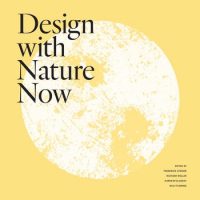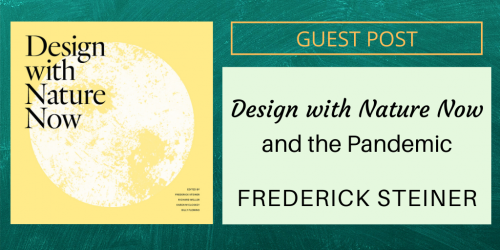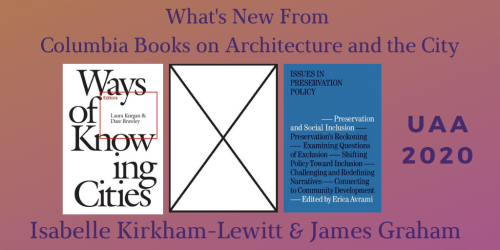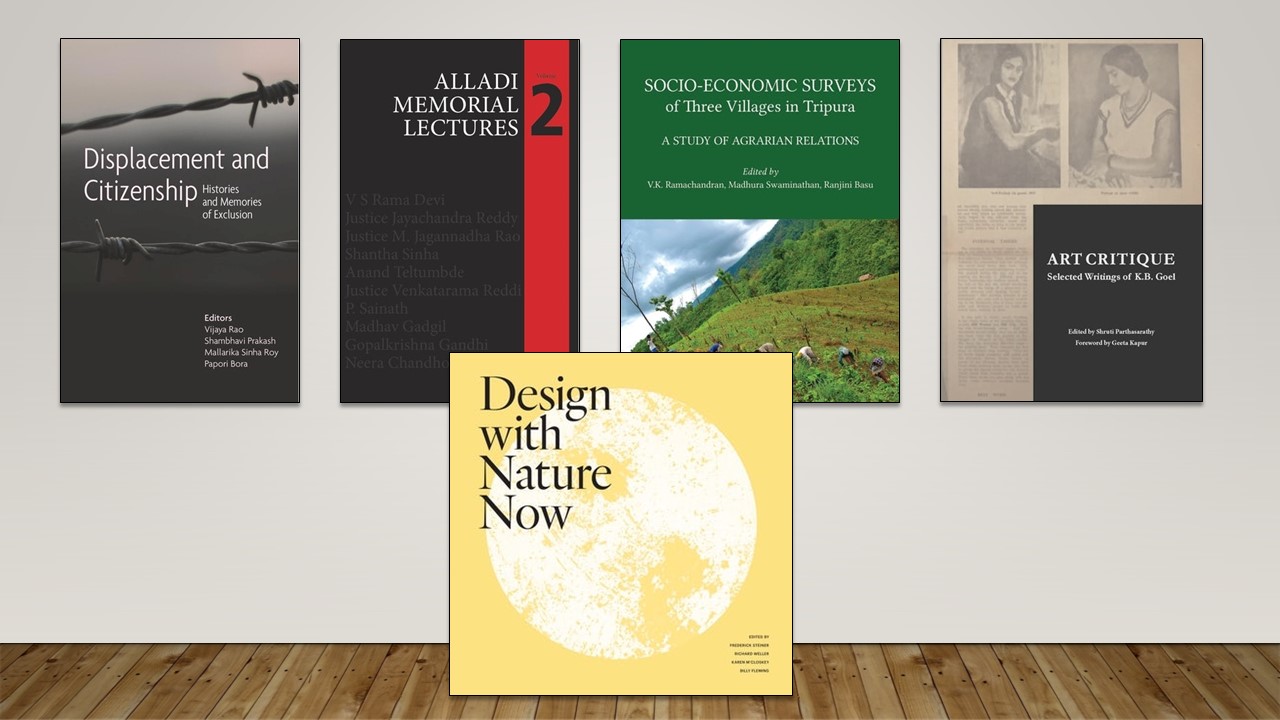What’s New From the Lincoln Institute of Land Policy

Welcome back to our UAA Virtual Booth! We’re excited to hear from Maureen Clark and Emma Zehner, representing the Lincoln Institute of Land Policy, one of our distributed presses, as they introduce two exciting new books for the urban studies audience.
• • • • • •
Good afternoon! We are here representing the Lincoln Institute of Land Policy, one of Columbia University Press’s distributed presses. A little background: The Lincoln Institute is a nonprofit private operating foundation based in Cambridge, Massachusetts, with the core belief that good land policy can help communities both plan and pay for equity and resilience. We publish books, our Policy Focus Reports, and magazine articles about critical land-use issues, all by global experts in city and regional planning, urban economics, and conservation. Our target audience is policy makers, local leaders, students, scholars, and all concerned community members.
I think you might be particularly interested in two of our new titles that focus on how cities and other communities can plan for the future in the face of climate change and other twenty-first-century challenges.
 First up, Design with Nature Now, published in October 2019, celebrates the fiftieth anniversary of Ian McHarg’s landmark book, Design with Nature, which outlined a new vision for regional planning using natural systems. The new book demonstrates that cities must work with ecology rather than against it to develop sustainably. The volume depicts twenty-five cutting-edge ecological design projects, covering geographies from the Netherlands to Indonesia, that address biodiversity loss, sea-level rise, water and air pollution, and urbanization. Essays by practitioners, including James Corner, project lead for the High Line, and Laurie Olin, whose projects include the master plan of the Los Angeles River and the design of Manhattan’s Bryant Park, explore what it means—in practice—to design with nature now.
First up, Design with Nature Now, published in October 2019, celebrates the fiftieth anniversary of Ian McHarg’s landmark book, Design with Nature, which outlined a new vision for regional planning using natural systems. The new book demonstrates that cities must work with ecology rather than against it to develop sustainably. The volume depicts twenty-five cutting-edge ecological design projects, covering geographies from the Netherlands to Indonesia, that address biodiversity loss, sea-level rise, water and air pollution, and urbanization. Essays by practitioners, including James Corner, project lead for the High Line, and Laurie Olin, whose projects include the master plan of the Los Angeles River and the design of Manhattan’s Bryant Park, explore what it means—in practice—to design with nature now.
One of my favorite projects is Staten Island’s Freshkills Park. After operating as a garbage dump for over fifty years, the landfill was transformed into a public park. Or Room for the River in the Netherlands, which traded dams and dikes for flood-abatement strategies that safely increase the carrying capacity of their nation’s major rivers, making more “room for the river” and designing with nature, not against it.
 The other book is Scenario Planning for Cities and Regions, out this month. It’s hard to predict what our urban centers will look like in ten, twenty, or fifty years given unpredictable factors like climate change, autonomous vehicles, other rapid technological advances, and now COVID-19. Historically, the planning field has largely ignored uncertainty, resulting in plans that perpetuated the status quo rather than preparing residents for the future. However, scenario planning allows communities to create and analyze multiple plausible versions of the future, thus accounting for these uncertain factors, resulting in better, more adaptable plans. Scenario Planning for Cities and Regions offers the first in-depth examination of this method applied to city planning. The author, Robert Goodspeed, explains what scenario planning is and presents evidence of its effectiveness. The book is intended for urban planning professionals, students, and researchers and offers a window into methods, a chapter on specific modeling and simulation tools, and case studies.
The other book is Scenario Planning for Cities and Regions, out this month. It’s hard to predict what our urban centers will look like in ten, twenty, or fifty years given unpredictable factors like climate change, autonomous vehicles, other rapid technological advances, and now COVID-19. Historically, the planning field has largely ignored uncertainty, resulting in plans that perpetuated the status quo rather than preparing residents for the future. However, scenario planning allows communities to create and analyze multiple plausible versions of the future, thus accounting for these uncertain factors, resulting in better, more adaptable plans. Scenario Planning for Cities and Regions offers the first in-depth examination of this method applied to city planning. The author, Robert Goodspeed, explains what scenario planning is and presents evidence of its effectiveness. The book is intended for urban planning professionals, students, and researchers and offers a window into methods, a chapter on specific modeling and simulation tools, and case studies.
Enjoy your sessions. If you want to learn more about any of our publications, head to our website. Let’s connect again soon!








